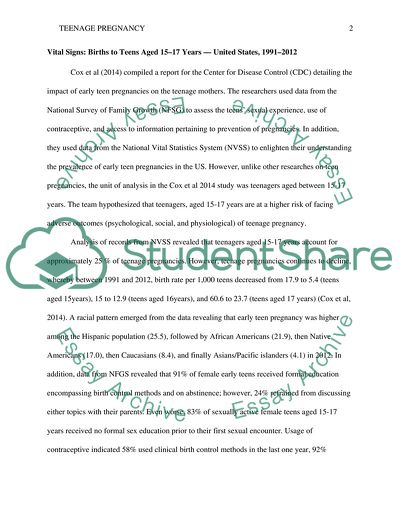Cite this document
(“Teenage Pregnancy Research Paper Example | Topics and Well Written Essays - 1750 words”, n.d.)
Retrieved from https://studentshare.org/psychology/1641117-teenage-pregnancy
Retrieved from https://studentshare.org/psychology/1641117-teenage-pregnancy
(Teenage Pregnancy Research Paper Example | Topics and Well Written Essays - 1750 Words)
https://studentshare.org/psychology/1641117-teenage-pregnancy.
https://studentshare.org/psychology/1641117-teenage-pregnancy.
“Teenage Pregnancy Research Paper Example | Topics and Well Written Essays - 1750 Words”, n.d. https://studentshare.org/psychology/1641117-teenage-pregnancy.


